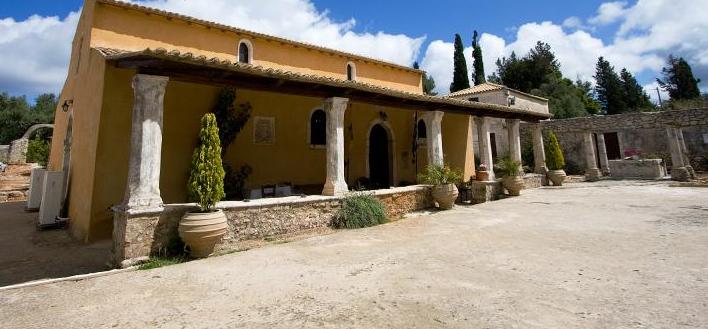
The Monastery of Panagia Anafonitria is built in a huge pine forest at northwest Zante. It is a pilgrimage where thousands of people come every year for two reasons. The first one is the icon of Theotokos (Virgin Mary) that came miraculously from Constantinopolis. The second reason is that the Monastery is connected to the life of the patron saint of the island, Saint Dionisios.
After the fall of Constantinople in 1453, a commercial ship that got away from Constantinopolis was shipwrecked at the steep coasts of Zante. The shepherds of that region noticed at night, at the low part of the mountain, a mysterious glimpse that lightened the entire region. When they went there, in the morning, together with priests, they found the icon of Panagia Vrefokratousa (=baby keeping) in a cave.
As the years passed, the rulers of the island founded a Monastery for Virgin Mary’s honour, near the village. They transferred the icon to the Monastery a lot of times, but it always disappeared and it was found in the cave where it was initially discovered. Then, they built a chapel at that exact place and they called it ‘Katikitirio’ (God’s house). Since that time, the icon stayed in the Monastery. In order to remember the incidents, every Monday after the Easter, the residents of that place transfer the icon at that place and a festival takes place.
At times, the icon of Anafonitria was transferred at Constantinopolis and at other villages during drought and it stayed there until the day it would start to rain.
Also, the patron saint of the island, Saint Dionisios, lived here as an abbot in the 16th century. This is the Monastery where he met his brother’s murderer. He forgave him and showed love towards him.
The Monastery of Panagia Anafonitria has no monks now. The priest of the parish and the people of the island take care of it now. It celebrates on the 23rd of August, 9 days after the Dormition of Virgin Mary and on the first Sunday after the memory of the disinterment o the relics of Saint Dionisios (24th August).











